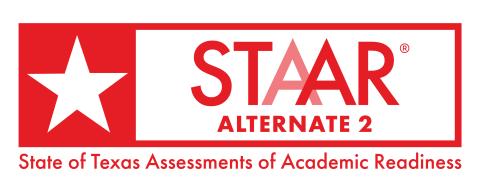ɬ� Alternate 2 Resources
The State of ɬ� Assessments of Academic Readiness (ɬ�®) Alternate 2 is an alternate assessment based on alternate academic achievement standards. It is a standardized item-based assessment administered individually to eligible students with the most significant cognitive disabilities who are receiving special education services. ɬ� Alternate 2 fulfills the requirements of the federal Elementary and Secondary Education Act, the Individuals with Disabilities Education Act, and the Every Student Succeeds Act.����
ɬ� Alternate 2 is a paper assessment in mathematics, reading language arts (RLA), science, and social studies for students in grades 3–8 and high school.
Who Is Tested?
A student's admission, review, and dismissal (ARD) committee must determine if the student meets the participation requirements for ɬ� Alternate 2.��All students enrolled in ɬ� public schools and open-enrollment charter schools in grades 3–12 who meet the participation requirements are required to participate in ɬ� Alternate 2 at their enrolled grade level or course.
- Updated Participation Requirements
- Updated Participation Requirements-Spanish
- Updated Participation Requirements Companion Document
- Updated Participation Requirements Companion Document-Spanish
- Participation Requirements Frequently Asked Questions��(Updated 10/31/2023)
- Revised ɬ� Alternate 2 Participation Requirements Webinar PPT
- Revised ɬ� Alternate 2 Participation Requirements Webinar PDF
If an ARD committee determines that a student meets the eligibility criteria for "No Authentic Academic Response" (NAAR) or a "Medical Exception," the student will not be required to participate in ɬ� Alternate 2.����
- ɬ� Alternate 2 and TELPAS Alternate NAAR��Eligibility Requirements
- ɬ� Alternate 2 and TELPAS Alternate NAAR Eligibility Requirements-Spanish
- ɬ� Alternate 2 and TELPAS Alternate Medical Exception Eligibility Requirements
- ɬ� Alternate 2 and TELPAS Alternate Medical Exception Eligibility Requirements-Spanish
What Is Tested?
The ɬ� Essential Knowledge and Skills (TEKS) Vertical Alignment documents provide a complete listing of the TEKS curriculum from pre-kindergarten through end-of-course (EOC).��These documents provide a total overview of the knowledge and skills statements and align student expectations across the grades. The student expectations provide access points to the general education curriculum by serving as prerequisite skills for ɬ� Alternate 2.����
In addition to the prerequisite skills, there are specific terms that students will need exposure to during instruction. This list does not encompass all of the curriculum a student would be responsible for; it is a unique list of instructional terms developed by educator teams. Students need to become familiar with these terms as the student is developmentally able to comprehend the content. Students in higher grades need to also know the terms presented in earlier grades.
What Do Test Questions Look Like?
Access released test questions at ɬ� Alternate 2 Released Test Questions.
What Is Reported?
- Performance Standards
- Progress Measures
- Statewide Summary Reports
- Statewide Item Analysis Reports
- Raw Score Conversion Tables
- 2022 ɬ� Alternate 2 Grades 3–8 Frequency Distribution
- 2022��ɬ� Alternate 2 EOC Frequency Distribution��
What Other Information Is Available?
Test Administration
- ɬ� Alternate 2 Test Administrator Manual
- ɬ� Alternate 2 Scoring Document Math, Science, and Social Studies
- ɬ� Alternate 2 Scoring Document RLA
Training
ɬ� ESSA 1.0 Percent Waiver
Student Assessment Division
(512) 463-9536

